
How to Use Adafruit ADXL345: Examples, Pinouts, and Specs
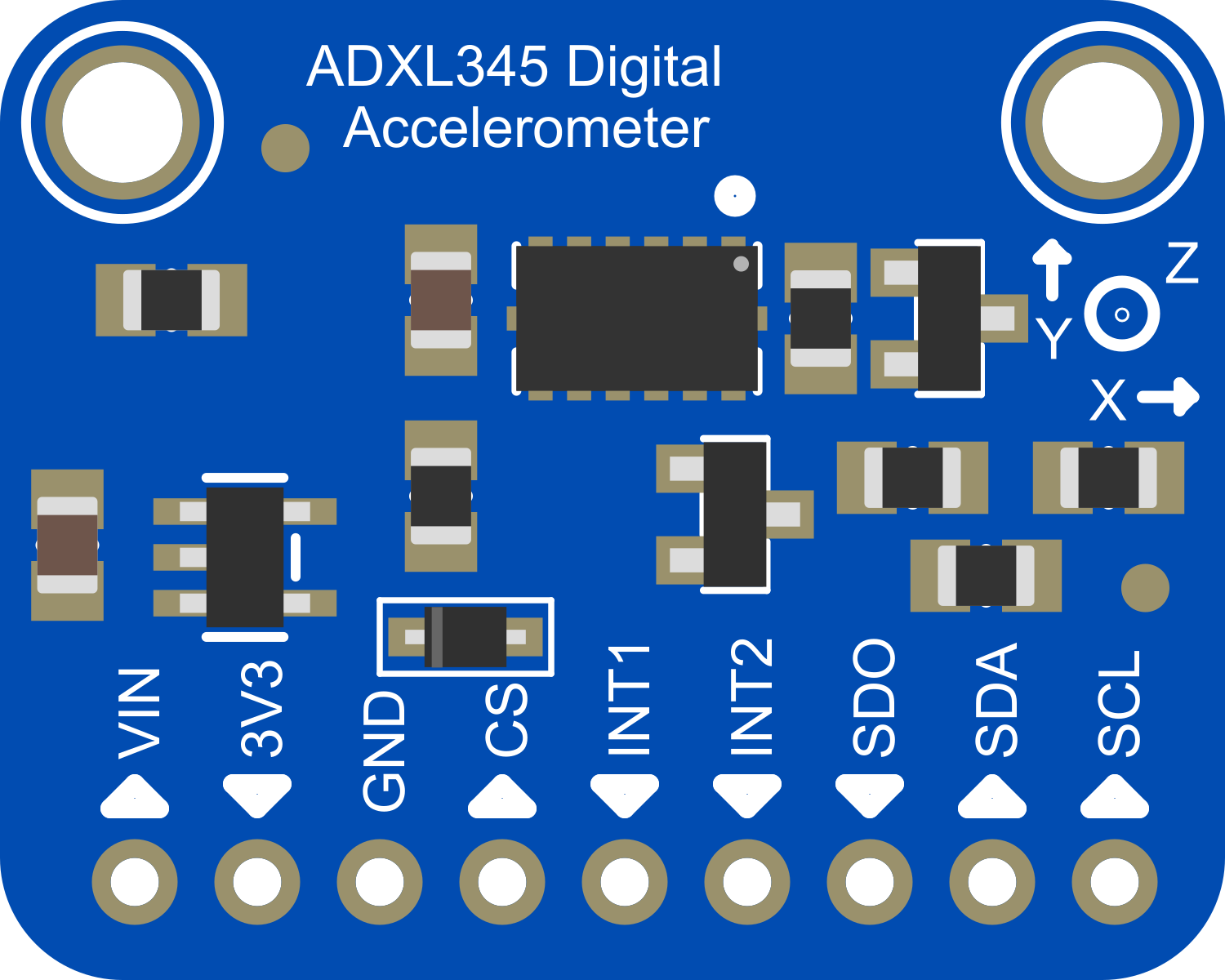
 Design with Adafruit ADXL345 in Cirkit Designer
Design with Adafruit ADXL345 in Cirkit DesignerIntroduction
The Adafruit ADXL345 is a compact, low-power, 3-axis MEMS accelerometer that measures acceleration with a full-scale range of ±2g, ±4g, ±8g, or ±16g. It is capable of measuring both dynamic acceleration (e.g., motion or shock) and static acceleration (e.g., gravity). This versatility makes it suitable for a wide array of applications including mobile devices, gaming systems, industrial instrumentation, and personal navigation devices.
Explore Projects Built with Adafruit ADXL345
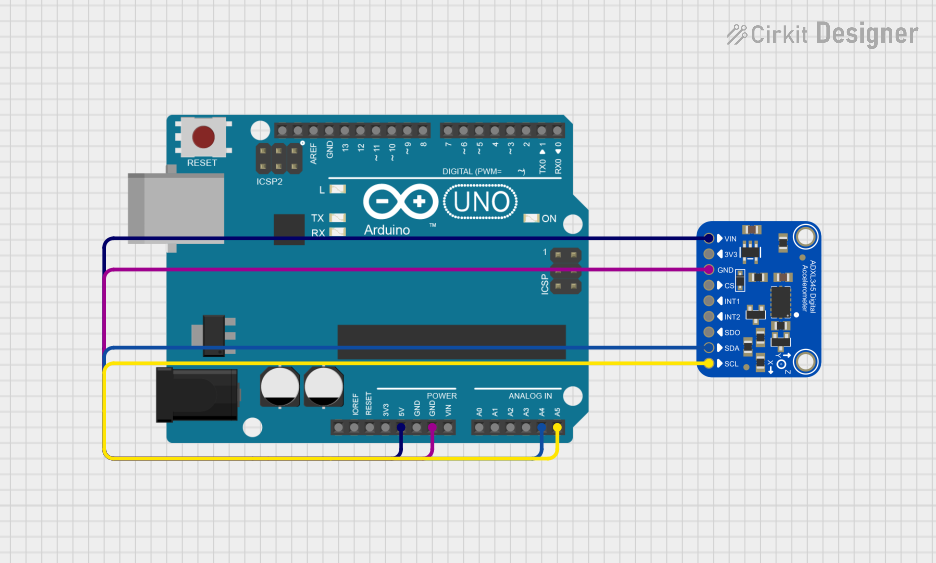
 Open Project in Cirkit Designer
Open Project in Cirkit Designer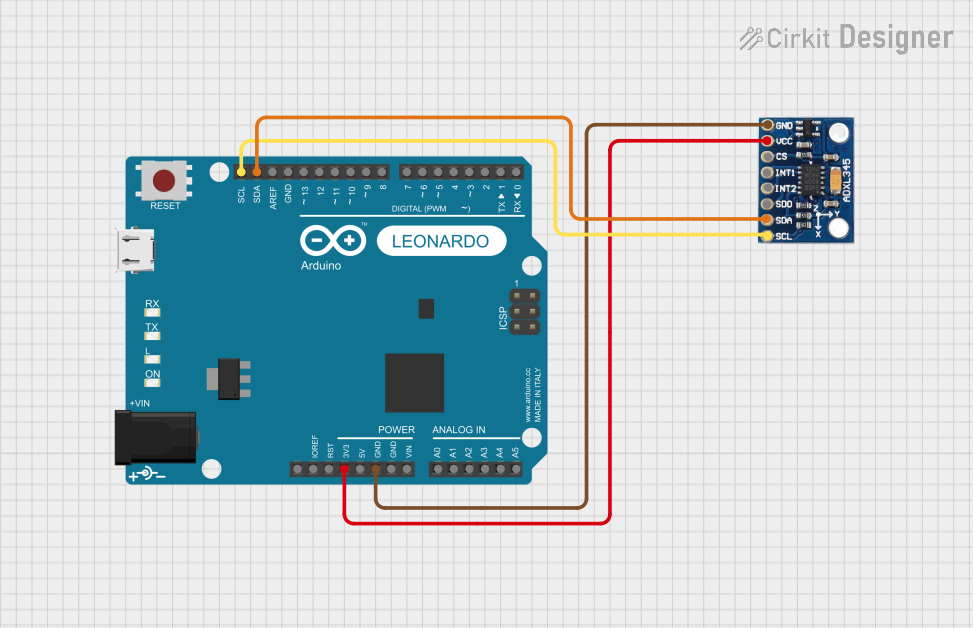
 Open Project in Cirkit Designer
Open Project in Cirkit Designer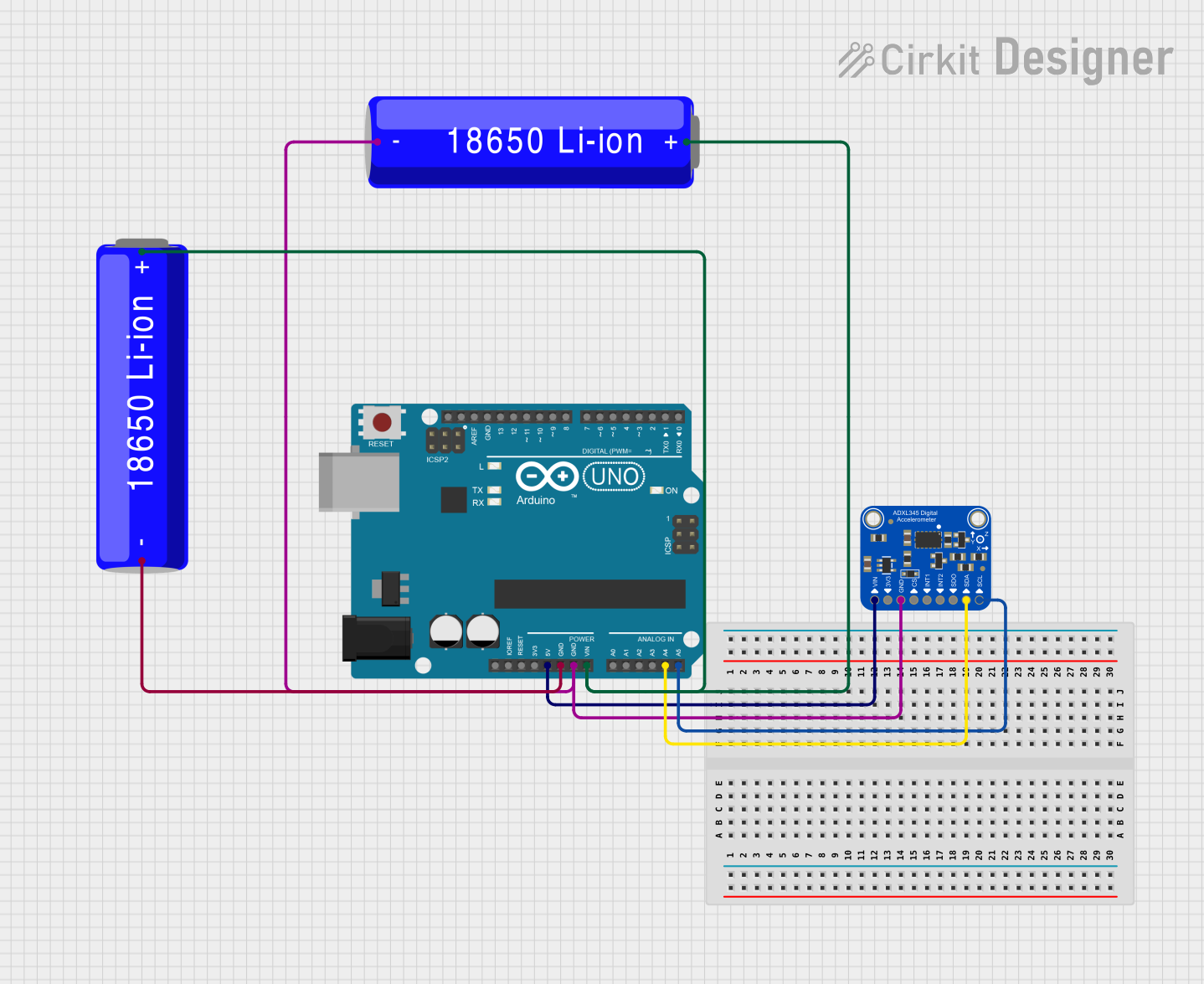
 Open Project in Cirkit Designer
Open Project in Cirkit Designer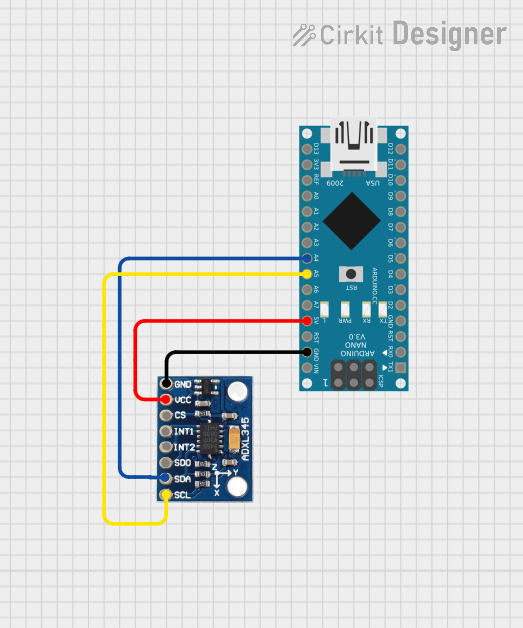
 Open Project in Cirkit Designer
Open Project in Cirkit DesignerExplore Projects Built with Adafruit ADXL345

 Open Project in Cirkit Designer
Open Project in Cirkit Designer
 Open Project in Cirkit Designer
Open Project in Cirkit Designer
 Open Project in Cirkit Designer
Open Project in Cirkit Designer
 Open Project in Cirkit Designer
Open Project in Cirkit DesignerTechnical Specifications
Key Features
- 3-axis sensing
- Selectable measurement range (±2g, ±4g, ±8g, ±16g)
- 13-bit resolution at ±16g (4mg/LSB)
- Low power consumption
- Built-in self-test
- SPI (3- and 4-wire) and I2C digital interfaces
- Tap/double tap detection and free-fall detection
Electrical Characteristics
| Parameter | Condition | Min | Typ | Max | Unit |
|---|---|---|---|---|---|
| Supply Voltage | VDD | 2.0 | 3.3 | 3.6 | V |
| Output Data Rate | 0.1 | 3200 | Hz | ||
| Current Consumption | Measurement Mode | 40 | µA | ||
| Temperature Range | Operating | -40 | +85 | °C |
Pin Configuration
| Pin Number | Name | Description |
|---|---|---|
| 1 | GND | Ground |
| 2 | VCC | Power supply (2.0V to 3.6V) |
| 3 | SDA | I2C Data / SPI Serial Data Input (SDI) |
| 4 | SDO | SPI Serial Data Output (SDO) / I2C Addr |
| 5 | SCL | I2C Clock / SPI Serial Clock (SCK) |
| 6 | CS | SPI Chip Select (Active Low) / I2C Enable |
Usage Instructions
Integration into a Circuit
- Connect VCC to a 2.0V to 3.6V power supply.
- Connect GND to the ground of your power supply.
- For I2C communication, connect SDA and SCL to your microcontroller's I2C pins.
- For SPI communication, connect SDI, SDO, SCK, and CS to the corresponding SPI pins on your microcontroller.
Best Practices
- Use pull-up resistors on the I2C data lines if your microcontroller does not have them built-in.
- Ensure that the power supply is stable and within the specified voltage range.
- Place the accelerometer as close as possible to the center of mass of the object whose motion is being measured.
- Avoid physical shock and vibration that exceed the specified limits as they may damage the component.
Example Code for Arduino UNO
#include <Wire.h>
#include <Adafruit_Sensor.h>
#include <Adafruit_ADXL345_U.h>
Adafruit_ADXL345_Unified accel = Adafruit_ADXL345_Unified(12345);
void setup(void) {
Serial.begin(9600);
Serial.println("Accelerometer Test"); Serial.println("");
// Initialize the accelerometer.
if(!accel.begin()) {
Serial.println("No ADXL345 detected");
while(1);
}
// Set the range to whatever is appropriate for your project.
accel.setRange(ADXL345_RANGE_16_G);
}
void loop(void) {
sensors_event_t event;
accel.getEvent(&event);
// Display the results (acceleration is measured in m/s^2).
Serial.print("X: "); Serial.print(event.acceleration.x); Serial.print(" ");
Serial.print("Y: "); Serial.print(event.acceleration.y); Serial.print(" ");
Serial.print("Z: "); Serial.print(event.acceleration.z); Serial.print(" ");
Serial.println("m/s^2 ");
// Delay before the next reading.
delay(500);
}
Troubleshooting and FAQs
Common Issues
- No data is being read from the sensor: Ensure that the connections are correct and secure. Check that the correct voltage is being supplied to VCC.
- Inaccurate readings: Verify that the accelerometer is properly calibrated. Ensure that the device is stationary during calibration.
- Intermittent communication: Check for loose connections and ensure that pull-up resistors are in place if required.
FAQs
Q: Can the ADXL345 be used to detect orientation? A: Yes, by measuring static acceleration due to gravity, the ADXL345 can determine the angle at which it is tilted with respect to the earth's surface.
Q: What is the purpose of the CS pin? A: The CS pin is used to enable SPI communication. When using I2C, this pin can be tied to VCC to disable SPI mode.
Q: How can I reduce power consumption? A: The ADXL345 has a low power mode that can be enabled through software. Additionally, reducing the output data rate can also decrease power consumption.
For further assistance, consult the datasheet or contact Adafruit's support forums.